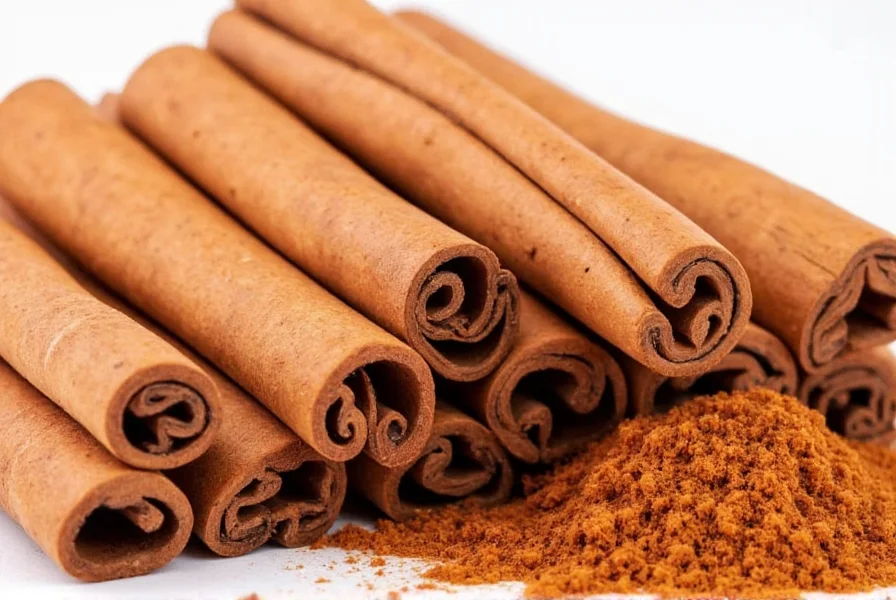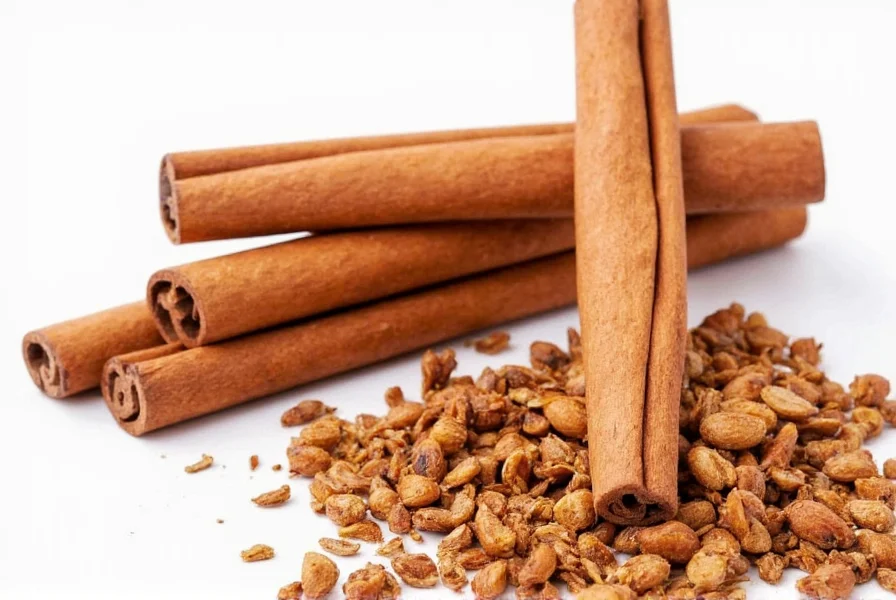Understanding Cinnamon Bark and Its Therapeutic Properties
Cinnamon bark, derived from the inner bark of Cinnamomum trees, has been used for centuries in traditional medicine systems across Asia and the Middle East. Modern research validates many of these traditional uses, revealing that the bark's health-promoting properties stem primarily from cinnamaldehyde—the compound responsible for cinnamon's distinctive flavor and aroma. Two main varieties dominate the market: Ceylon cinnamon (Cinnamomum verum), often called "true cinnamon," and the more common Cassia cinnamon (Cinnamomum cassia).
What makes cinnamon bark particularly valuable is its rich phytochemical profile, including polyphenols, flavonoids, and essential oils that work synergistically to deliver health benefits. Unlike cinnamon powder which may contain fillers, pure bark retains maximum potency when properly processed. Understanding cinnamon bark medicinal uses requires examining both historical applications and contemporary scientific validation.
Scientifically Validated Health Benefits of Cinnamon Bark
Multiple clinical studies have investigated the physiological effects of cinnamon bark consumption. The most robust evidence supports its role in metabolic health:
Blood Sugar Regulation and Insulin Sensitivity
Research published in the Journal of the Academy of Nutrition and Dietetics demonstrated that consuming 1-6 grams of cinnamon daily significantly reduced fasting blood glucose levels by 18-29% in people with type 2 diabetes. Cinnamon appears to mimic insulin activity and enhance glucose uptake by cells, making it valuable for those managing blood sugar control with cinnamon bark. The mechanism involves slowing carbohydrate digestion and improving insulin receptor function.
| Benefit | Scientific Evidence Level | Recommended Daily Amount |
|---|---|---|
| Blood sugar regulation | Strong human clinical trials | 1-6 grams |
| Anti-inflammatory effects | Human and animal studies | 2-4 grams |
| Antioxidant activity | Test tube and animal studies | 3-6 grams |
| Heart health support | Moderate human studies | 1-3 grams |
Natural Anti-Inflammatory Properties
Cinnamon bark contains powerful anti-inflammatory compounds that inhibit signaling pathways involved in inflammation. A 2020 study in Nutrients found that cinnamon extract significantly reduced inflammatory markers like TNF-α and IL-6 in participants with metabolic syndrome. This makes cinnamon a promising natural option for managing chronic inflammation associated with conditions like arthritis. People searching for natural anti-inflammatory remedies from cinnamon will find substantial scientific backing for this application.

Antioxidant Powerhouse
With one of the highest antioxidant capacities among spices, cinnamon bark combats oxidative stress through multiple mechanisms. Research in Oxidative Medicine and Cellular Longevity ranked cinnamon second only to cloves in antioxidant activity among 26 common spices. The polyphenols in cinnamon neutralize free radicals and boost the body's own antioxidant enzymes, potentially reducing cellular damage that contributes to aging and chronic disease.
Cardiovascular Health Support
Several studies indicate cinnamon bark may improve heart health markers. A meta-analysis in Nutrition Research Reviews concluded that cinnamon consumption significantly reduced total cholesterol, LDL cholesterol, and triglycerides while maintaining HDL levels. These effects appear dose-dependent, with greater benefits observed at daily intakes of 3 grams or more. For those exploring cinnamon bark benefits for heart health, the evidence suggests modest but meaningful improvements in cardiovascular risk factors.
Ceylon vs. Cassia: Understanding the Critical Difference
Not all cinnamon provides equal benefits or safety profiles. The distinction between Ceylon and Cassia varieties is crucial for regular consumption:
- Ceylon cinnamon (Cinnamomum verum): Contains minimal coumarin (0.017g/kg), making it safe for daily consumption. Has a delicate, sweet flavor with multiple thin bark layers.
- Cassia cinnamon (Cinnamomum cassia): Contains high coumarin levels (up to 63g/kg), which may cause liver toxicity with prolonged use. Has a stronger, spicier flavor with a single thick bark layer.
The European Food Safety Authority recommends a maximum coumarin intake of 0.1mg per kilogram of body weight daily. For a 150-pound person, this translates to approximately 1 teaspoon of Cassia cinnamon or several tablespoons of Ceylon cinnamon. Those researching safe cinnamon consumption guidelines should prioritize Ceylon for regular use.
Practical Applications and Consumption Guidelines
Maximizing the health benefits of cinnamon bark while minimizing risks requires proper usage:
Effective Incorporation Methods
For optimal absorption of cinnamon's active compounds, combine it with healthy fats or consume it with food. Try these evidence-based approaches:
- Add ½-1 teaspoon of Ceylon cinnamon to morning oatmeal or smoothies
- Brew cinnamon sticks as tea by simmering in water for 10-15 minutes
- Create a golden milk tonic with cinnamon, turmeric, and coconut milk
- Use in savory dishes like Moroccan tagines or Indian curries
Studies suggest that consuming cinnamon with carbohydrates enhances its blood sugar regulating effects, making it particularly valuable when added to carbohydrate-rich meals.
Dosage Recommendations Based on Research
Clinical trials have used varying doses depending on the health goal:
- Blood sugar management: 1-6 grams daily (approximately ¼ to 2 teaspoons)
- Anti-inflammatory effects: 2-4 grams daily
- General antioxidant support: 1-3 grams daily
For therapeutic effects, consistency matters more than high doses. Most studies showing benefits used cinnamon daily for 4-12 weeks. Those investigating optimal cinnamon dosage for health benefits should start with smaller amounts and gradually increase while monitoring effects.

Safety Considerations and Potential Interactions
While generally recognized as safe, cinnamon bark requires mindful consumption:
Coumarin Content and Liver Health
The primary safety concern with cinnamon, particularly Cassia varieties, is coumarin content. Chronic high intake may cause liver damage in sensitive individuals. Symptoms of coumarin toxicity include nausea, abdominal pain, and elevated liver enzymes. Those with pre-existing liver conditions should consult a healthcare provider before regular cinnamon consumption.
Medication Interactions
Cinnamon may interact with certain medications:
- Diabetes medications: May enhance blood sugar lowering effects, potentially causing hypoglycemia
- Blood thinners: Coumarin has anticoagulant properties that may increase bleeding risk
- Liver-metabolized drugs: May affect how the liver processes certain medications
Individuals taking prescription medications should discuss cinnamon bark interactions with medications with their healthcare provider before regular use.
Current Research Limitations and Future Directions
While promising, cinnamon research has limitations worth noting:
- Many studies use concentrated extracts rather than culinary amounts
- Long-term human studies are limited
- Most research focuses on short-term biomarker changes rather than clinical outcomes
- Individual responses vary based on genetics and health status
Future research directions include investigating cinnamon's effects on gut microbiota, cognitive function, and specific disease management protocols. Those interested in latest scientific findings on cinnamon bark should look for ongoing clinical trials examining these emerging applications.
Choosing Quality Cinnamon Products
Selecting effective cinnamon requires attention to detail:
- Look for "Ceylon" or "Cinnamomum verum" on labels for safer regular use
- Choose whole sticks over powder when possible for longer shelf life
- Store in airtight containers away from light and heat
- High-quality cinnamon should have a sweet, complex aroma without mustiness
- Consider third-party tested products for coumarin content verification
Proper storage preserves cinnamon's volatile oils and active compounds. Ground cinnamon loses potency within 6 months, while whole sticks maintain quality for 1-2 years when stored properly. Consumers researching how to select high-quality cinnamon bark should prioritize freshness and proper identification of the cinnamon variety.
Conclusion: Integrating Cinnamon Bark into a Healthy Lifestyle
Cinnamon bark offers multiple evidence-based health benefits when consumed appropriately. Its effects on blood sugar regulation, inflammation reduction, and antioxidant protection make it a valuable addition to a balanced diet. For optimal results, choose Ceylon cinnamon, consume 1-3 grams daily as part of meals, and maintain realistic expectations about its effects. While not a miracle cure, cinnamon serves as a flavorful, natural complement to evidence-based health strategies. As research continues to evolve, we may discover additional applications for this ancient spice in modern wellness practices.
Frequently Asked Questions
What's the difference between cinnamon bark and regular cinnamon?
Cinnamon bark refers specifically to the inner bark of Cinnamomum trees, which is the source of all true cinnamon. "Regular cinnamon" typically means Cassia cinnamon, which comes from a different Cinnamomum species than Ceylon cinnamon (true cinnamon). Both are derived from bark, but Ceylon cinnamon has multiple thin layers while Cassia has a single thick layer. Ceylon contains significantly less coumarin, making it safer for regular consumption.
How much cinnamon bark should I consume daily for health benefits?
Research suggests 1-3 grams (approximately ½ to 1 teaspoon) of Ceylon cinnamon daily provides health benefits without safety concerns. For Cassia cinnamon, limit to ½ teaspoon daily due to higher coumarin content. Therapeutic applications for blood sugar management may use up to 6 grams daily, but only for short periods (4-12 weeks) and preferably using Ceylon variety. Always start with smaller amounts to assess tolerance.
Can cinnamon bark lower blood sugar immediately after eating?
Cinnamon bark doesn't lower blood sugar immediately like medication, but it can reduce the blood sugar spike after meals. Studies show it slows gastric emptying and carbohydrate digestion, resulting in a more gradual rise in blood glucose. The effect is modest (10-20% reduction in post-meal glucose) and becomes more pronounced with consistent daily use over weeks. It works best when consumed with carbohydrate-containing meals.
Is it safe to consume cinnamon bark while pregnant?
Culinary amounts of cinnamon (up to ½ teaspoon daily) are generally considered safe during pregnancy. However, medicinal doses should be avoided as high cinnamon intake may stimulate uterine contractions. Pregnant women should prioritize Ceylon cinnamon due to its lower coumarin content. As with any dietary change during pregnancy, consult your healthcare provider before increasing cinnamon consumption beyond typical culinary use.
How long does it take to see benefits from cinnamon bark?
Most studies showing measurable benefits used cinnamon consistently for 4-12 weeks. Blood sugar improvements may be noticeable within 2-4 weeks of daily consumption. Anti-inflammatory effects typically require 6-8 weeks of regular use. Individual results vary based on health status, dosage, and cinnamon variety. For best results, incorporate cinnamon into your daily routine consistently rather than expecting immediate effects.











 浙公网安备
33010002000092号
浙公网安备
33010002000092号 浙B2-20120091-4
浙B2-20120091-4